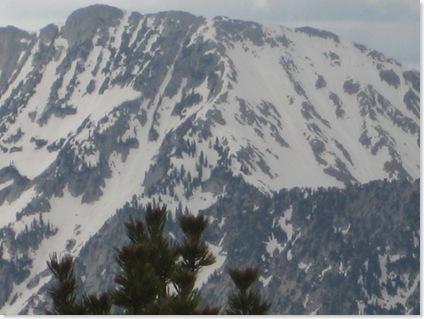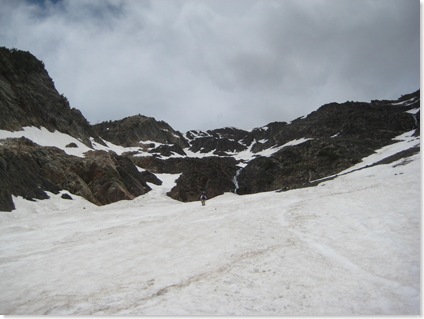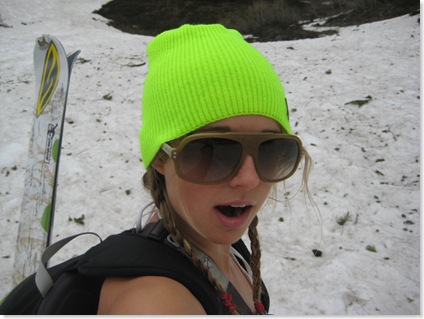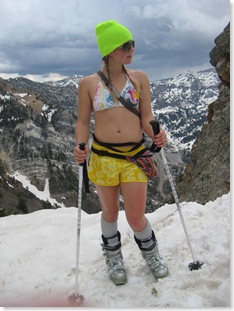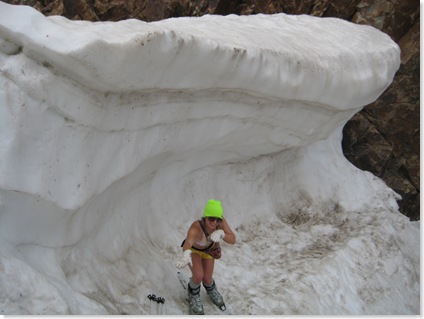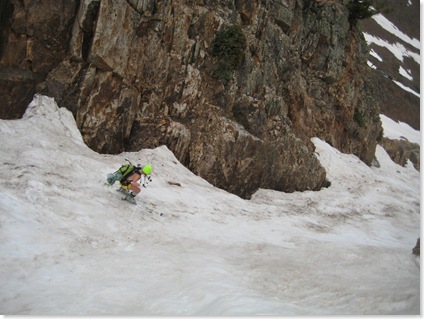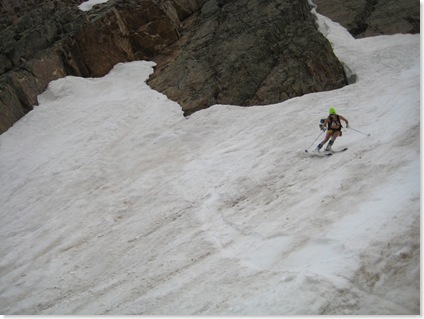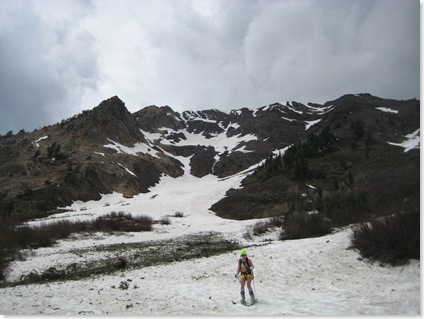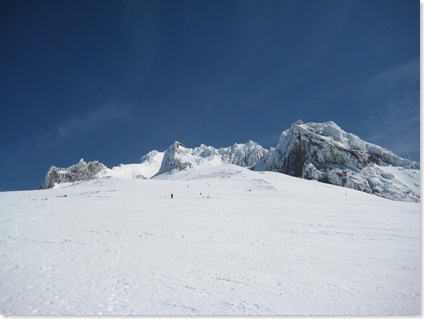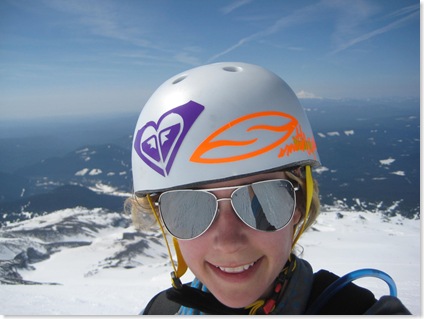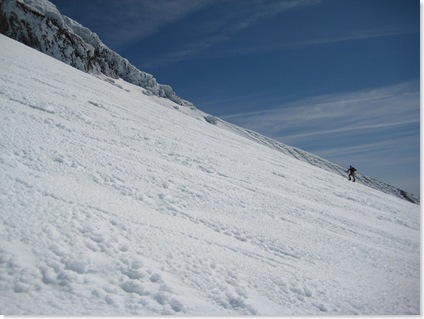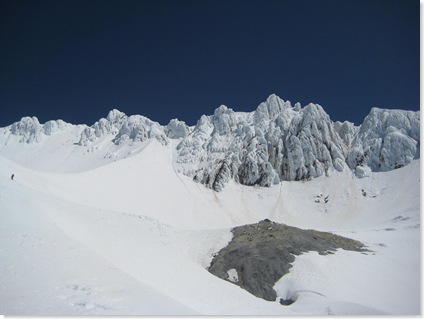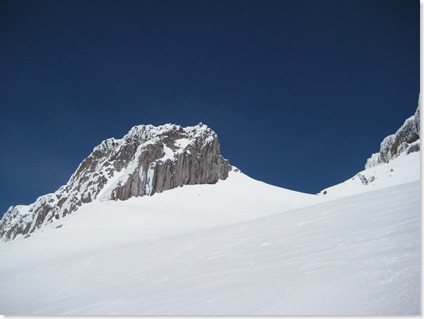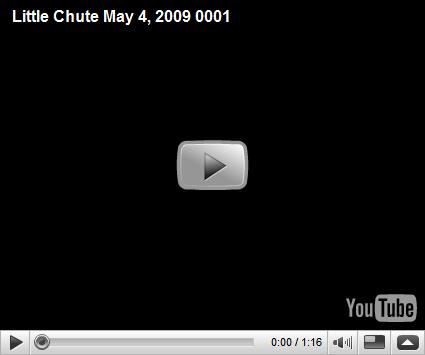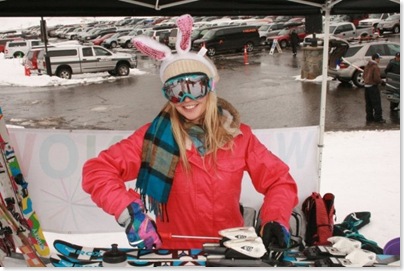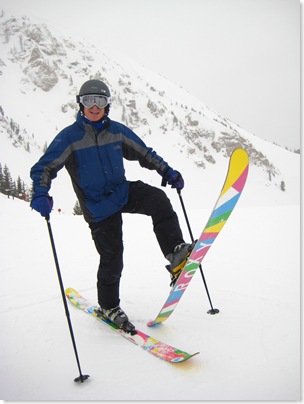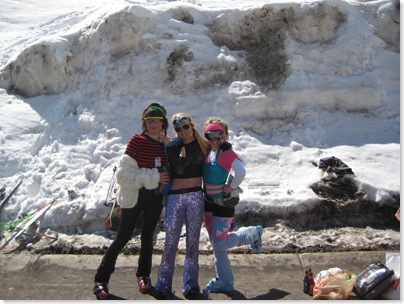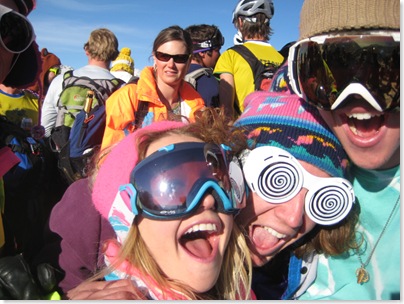May 23rd, 2009
I awoke to the sound of ducks quacking at 12:30 am. These weren’t your average quacking ducks–the noise was electronically generated from my cell phone alarm.
Could it already be time to get up, I wondered, after sleeping for less than an hour and a half. Why am I doing this? This is insane. I’m just going to go back to bed.
So I hit snooze, only to be awakened again at 12:45 by those ducks.
I finally motivated to sit up and get out of bed, hurriedly checking and double checking my pack, getting dressed, and eating breakfast. Watermelon slices, hard boiled eggs, toast and earl grey tea and it was go time.
The road to Timberline was dark, foggy and slick. The snow and rain mix was still coming down, and I worried that it might be too stormy a day to push for the summit.
At 1:30 am, the snow cat was waiting, along with photographer Richard Hallman and his friend. We loaded up the cat and took off to head to the top of palmer chair.
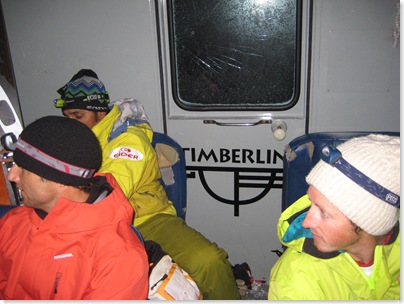
Usually when yo think about cat skiing, you think about a mellow ride up where you chit chat with friends and comfortably hang out. This cat ride was different. We were in some turbo charged, souped up monster cat that dropped us on the top of Palmer in 20 minutes. Trying to skin up and move around the cat was challenging, as each turn would throw us around.
When I stepped out of the cat, the cold harsh wind slapped me across the face and rattled me to the bone. It was snowing but I could see the stars through the flakes. The wind continued to howl.
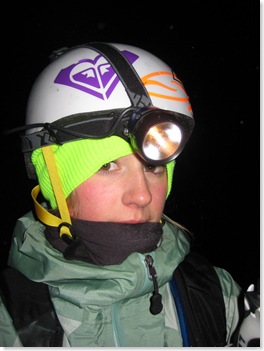
Forrest Shearer, Richard Hallman, Asit Rathod and I started our journey in the dark, and our hike was illuminated only by our tiny headlamps and a sliver of a moon on a cold, dark mountain.
The first hint of daybreak:
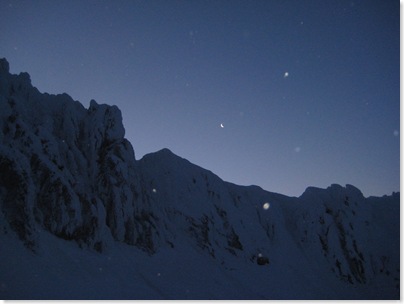
Hiking in the dark is a strange but wonderful activity. Instead of being able to look up at how far you have to go, and look back at where you’ve come, you are only able to see the step ahead of you and focus on taking that. It forces you to be mindful and live in the moment. It also makes any approach go by more quickly.
The snow was a combination of fresh powdery wind drifts and the hardest, most frozen ice I’ve ever felt, so hard and cold you couldn’t even get a metal edge into it. We were able to follow some ribbons of wind drifts close to the saddle of the Hogsback, where we switched to crampons and brought out the ice axes.
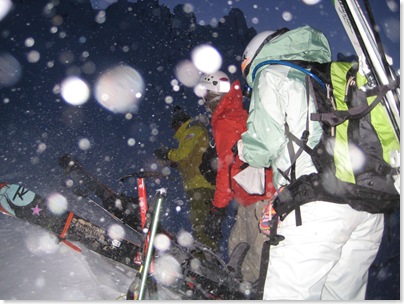
As we went up the Hogsback, the earliest rays of light were beginning to come out from the East. I longed for the sun to hit my face, to warm my shivering body. The wind was still bitterly cold and my hands were going in and out of numbness. But my feet, with my crampons and my slipper like Dynafit Zzero boots, felt great and the rest of the climb went quickly and uneventfully.
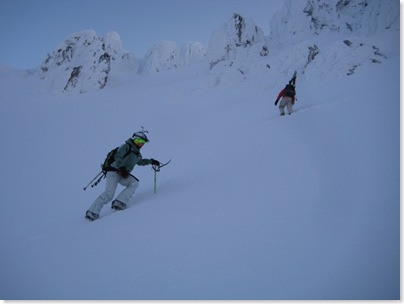
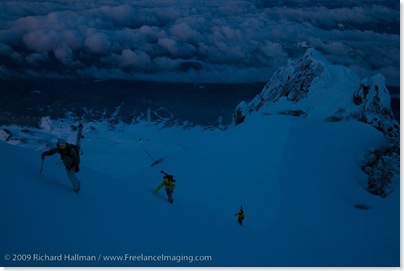
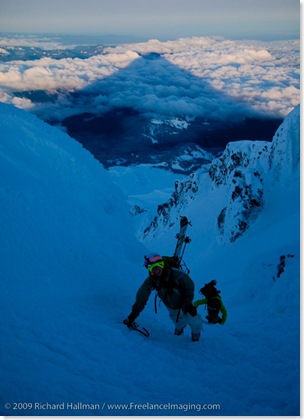
We were the first to arrive on the summit and blissfully enjoyed the views of Mt. Rainer, Mt. St. Helens and others as the sun first hit the peaks. During the sunrises on Mt. Hood, the looming peak casts a shadow over the valley below.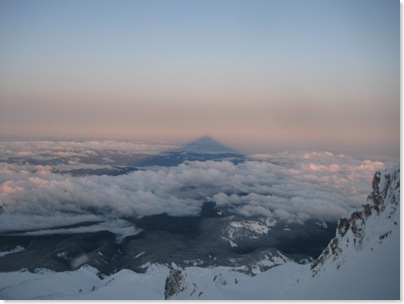
I was so excited to make it over the last crux, digging my ice ax and crampons in, and finally reach the summit. Before we did the climb, I did some research about it, and was encouraged to read that the first women to climb Mt. Hood did it in skirts in the late 1800s. And in more recent Hood history, one woman allegedly climbed it in high heels.
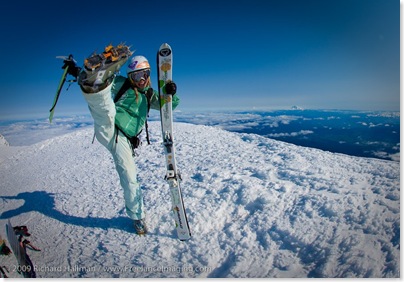
Karate kick!
We hung out on top for awhile, waiting for the snow to maybe soften, just a little, and to check out the views. The cold wind kept slapping me in the face and chilled my bones. I ended up running laps around the summit to keep warm, even though my legs were already slightly tired.
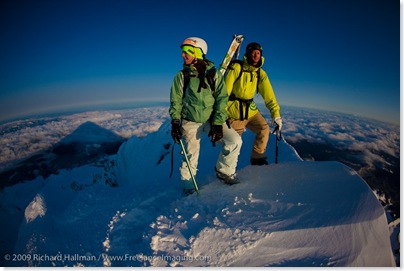
We hiked across the top of the ridge to get ready to drop in on our ski line. The ridge was pretty thin with big exposure on both sides. I took a few deep breaths and went back to focusing on walking, putting one foot in front of another and trying not to down either side (especially to my right where there were 3,000 feet of cliffs and ice). I figured this would be the last crux and the rest would be joyful, easy breezy skiing.

Skiing off the summit.
First of all, skiing down Mt. Hood is much steeper and scarier than I thought it would be. From what I’ve gathered, skiing off the summit in good corn or softer snow is difficult because by the time the snow softens enough, so does the ice and rocks and subjects you to avalanche and rockfall danger. There was some fresh powder, and I did enjoy some amazing turns, but in between those turns were areas of hard, glacial ice. It’s variegated, crunchy, and throws you in unexpected ways. Take this variability and imagine yourself on a 50 degree slope where if you fall, you either slide into a crevasse or continue down a 7,000 foot mountain. Let’s just say the conditions kept me on my toes.
Once we got lower down, the skiing was fabulous. The snow was soft and creamy and highly rippable. It felt that much better to be able to open it up without worrying. The ski down is over 7,000 vertical feet.
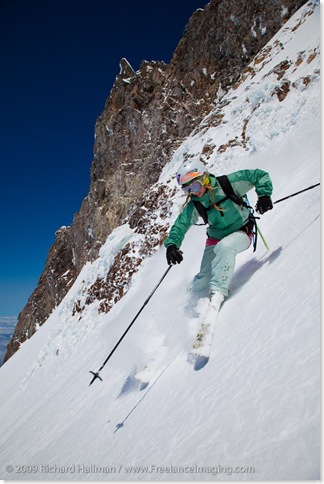
We got back to the parking lot around one, almost 12 hours after we parked there. We drove to Government camp to the Huckleberry Lodge and Restaurant to enjoy a huckleberry shake and BLT. I’m not usually a bacon fan, but the bacon never tasted so good, after eating frozen Clif shots and frozen hard boiled eggs all morning. One thing I love about hiking is that you can eat whatever you want before and after a big hike.
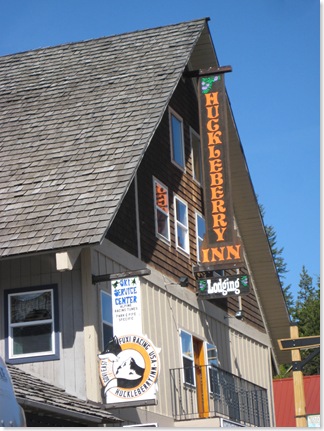
Climbing up Mt. Hood was a new type of experience for me–skiing in a glaciel environment. It poses a new set of dangers than what I’ve been exposed to before, but also provides a new set of rewards. I’m so glad I made it up there, and can’t wait to plan my next summit!
Posted in Skiing, Travel, Uncategorized
